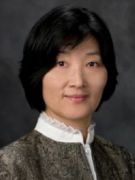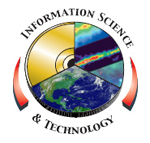
Please Note: The content on this page is not maintained after the colloquium event is completed. As such, some links may no longer be functional.
Meemong Lee
Science Observing System Simulation Experiment based Mission and Instrument Concept Exploration
Tuesday, October 19, 2010
Building 8 Auditorium - 3:30 PM
(Coffee and cookies at 3:00 PM)
** Note change in time and location **
An emerging new paradigm in Earth science missions addresses the interplay between observing systems and Earth system models where observations are assimilated to validate the models and simulated experiments are performed to optimize future observations. Sensor-web observation explorer (SOX) is an atmospheric science OSSE system developed at JPL to enable simulated experiments of an integrated observation infrastructure involving multiple types of platforms and instruments. The goal of the SOX is to provide a bridge between scientists and engineers allowing them to collaboratively explore mission and instrument concepts such as: What needs to be measured? When and where? How often and how long? How accurately & how precisely? A prototype SOX system was developed with the award from AIST/ESTO during 2005-2008 and the technology has been successfully infused to several OSSE activities of future atmospheric science mission studies at JPL such as GEOCAPE, GHGIS, and ACOS. The technology infusion has been extended to on-going missions such as TES (Tropospheric Emission Spectrometer) and MLS (Microwave Limb Sounder) for planning next generation mission concepts.
The SOX performs the mission and instrument concept exploration in three coordinated processes, requirement formulation process, forward modeling process, and inverse modeling process. The requirement formulation process allows scientists to parametrically compose the observation scenarios and measurement quality parameters to explore. The forward modeling process virtually explores the observation scenarios and measurement qualities by simulating target signals and measurement data products. The inverse modeling process analyzes science impacts of the explored mission and instrument concepts by evaluating the retrieval sensitivity of the measurement quality and the global data assimilation sensitivity of the observation scenarios. Major technical challenges in performing OSSE-based mission and instrument concept exploration include comprehensive atmospheric state representation, diverse community model software tracking, inter-discipline information sharing, and cost effective operation service. The SOX team addresses the above challenges by collaborating with atmospheric scientists and model developers, developing advanced simulation environments, and employing the state-of-the-art information technologies. This presentation will discuss the technical details of the SOX system architecture, technology infusion process, and cultural impact on mission and instrument design community at JPL.
Dr. Lee is a principal engineer specializing in multidisciplinary modeling and simulation technology. Over 25 years at JPL, she has led a wide range of R&D activities, created innovative solutions for flight projects, and actively advocated model-based planning and design approaches. She is currently involved in developing three types of advanced design systems, 1) Sensor-web observation scenario explorer (SOX), 2) Juno mission simulation and visualization network (MSVN), and 3) End-to-end atmospheric science observing system simulation experiment framework (OSSE). Dr. Lee completed her Ph.D. in Electrical Engineering at Oklahoma State University, where she also received an M.S. in Computer Science. Her B.S. is in Electronics Engineering from Sogang University, Seoul Korea.
IS&T Colloquium Committee Host: Tsengdar Lee
Sign language interpreter upon request: 301-286-7040
Request future announcements
